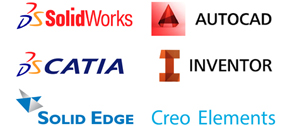One of the distinctive things about the iPhone 5S is the A7, a “system on a chip” that provides the smartphone’s computing power. Traditional PCs have separate chips for the processor, graphics card, RAM and other components. Smartphones and tablets tend to use a “system on a chip” (SoC) design incorporating all of these components. That allows for smaller, cheaper and less power-hungry hardware.
The emergence of SoC’s about a decade ago represented a significant change in the trajectory of Central Processing Unit technology. Moore’s Law, which has proven valid for close to a half-century, says that the number of transistors on a chip doubles every 18 months. There are different ways for engineers to use the fresh batch of transistors they’re blessed with every 18 months.
During the 1980s and 1990s, they mostly focused on performance. The trend was toward CPUs with higher clock rates and more and more processing units. But that approach ran out of steam about a decade ago. Higher clock speeds generated more heat, and it was proving impossible to keep CPUs cool. And adding more “execution units” was running out of steam, because there was only so much computing a CPU could do in one clock cycle.
So over the last decade, chip engineers have focused less on increasing raw processing power and more in packing more functionality onto each chip. That has enabled the creation of smartphones that may not be as powerful as their desktop cousins but are dramatically smaller, lighter and cheaper. That’s why you can buy a $200 device with as much processing power as a 1990s PC that fits in your pocket and can run all day on battery power.
While some other vendors purchase SoC’s designed by others, recent Apple products have been built on Apple-designed chips. Previous iterations were known as the A4, A5, and A6. The new iPhone introduces the latest iteration of this product line, the A7. According to Apple CEO Tim Cook, it has more than a billion transistors and is the first in its line to support 64-bit addresses, a technology that was adopted on desktop computers in the last decade.
via apple - Google News http://news.google.com/news/url?sa=t&fd=R&usg=AFQjCNHrWDkpW6jgbqT2S4xnt-sXuQCmcA&url=http://www.washingtonpost.com/blogs/the-switch-live/liveblog/apples-iphone-event-live-updates/














0 comments:
Post a Comment